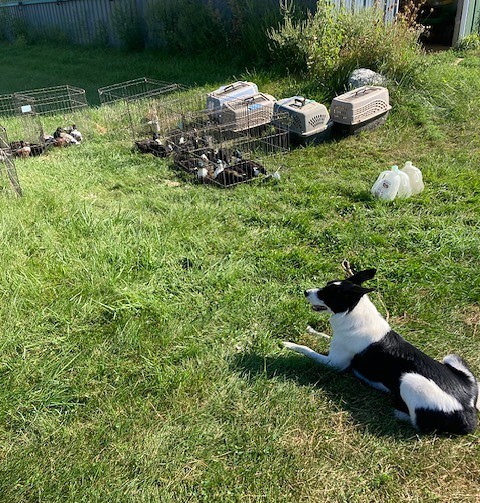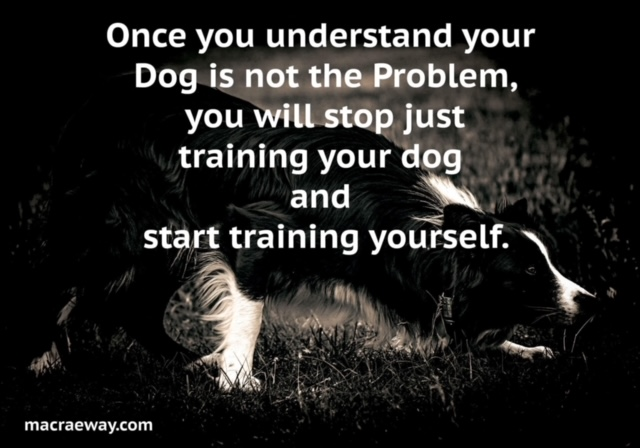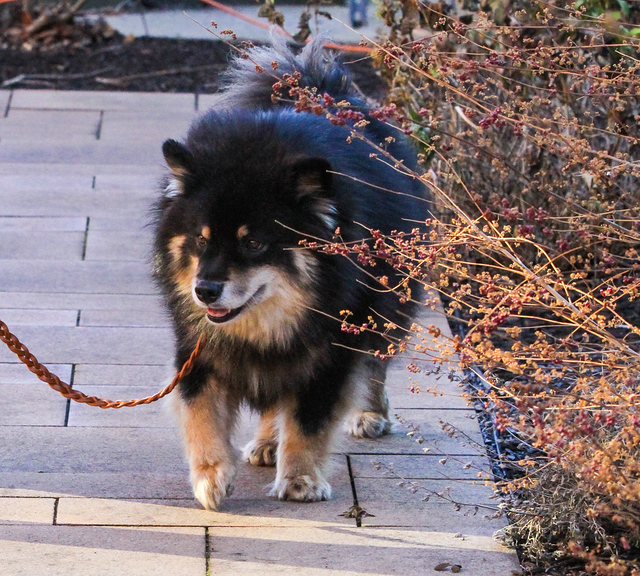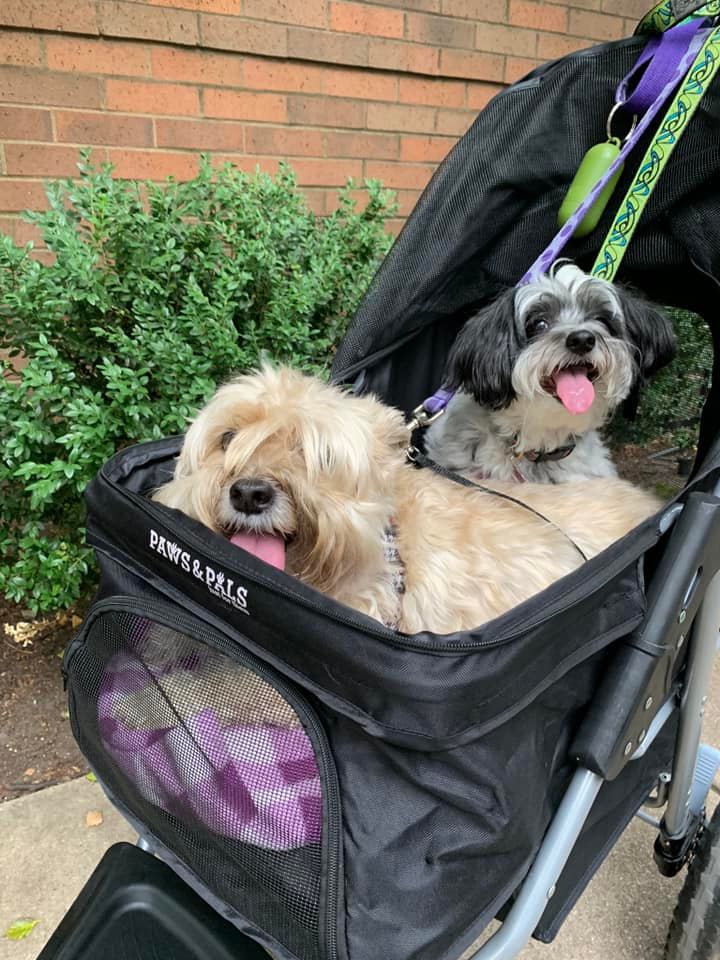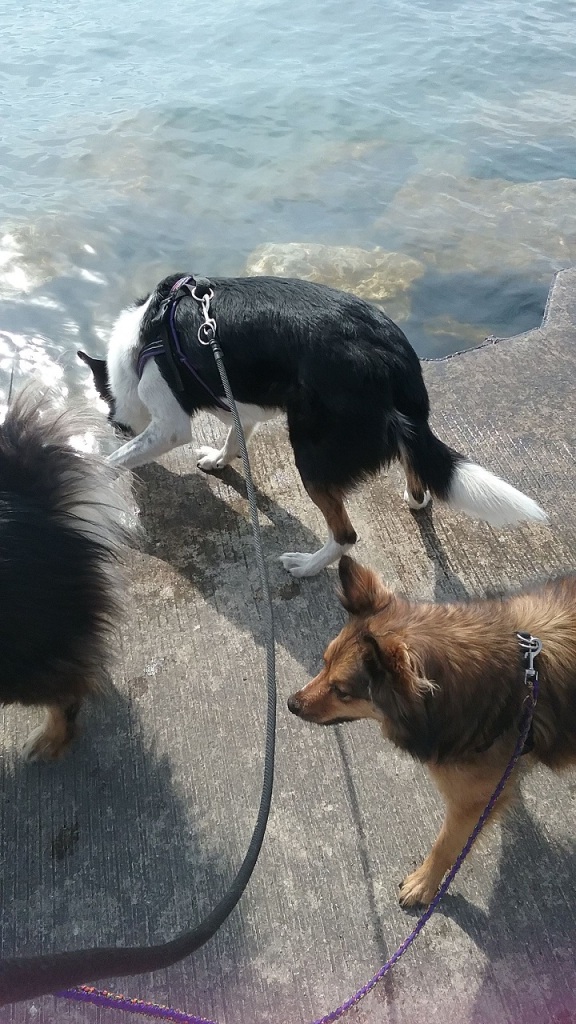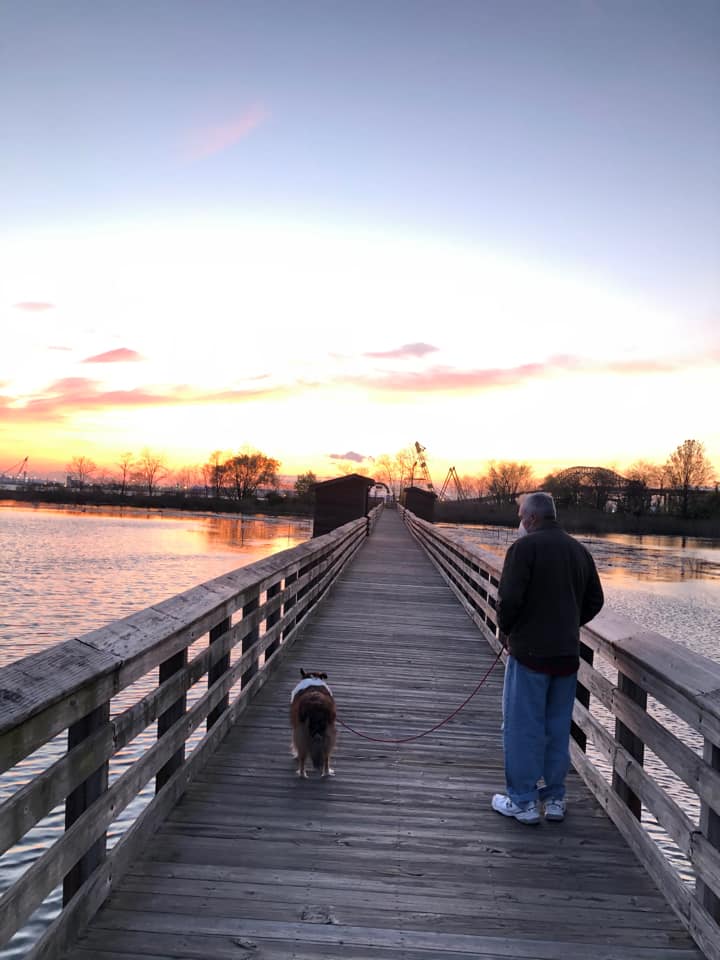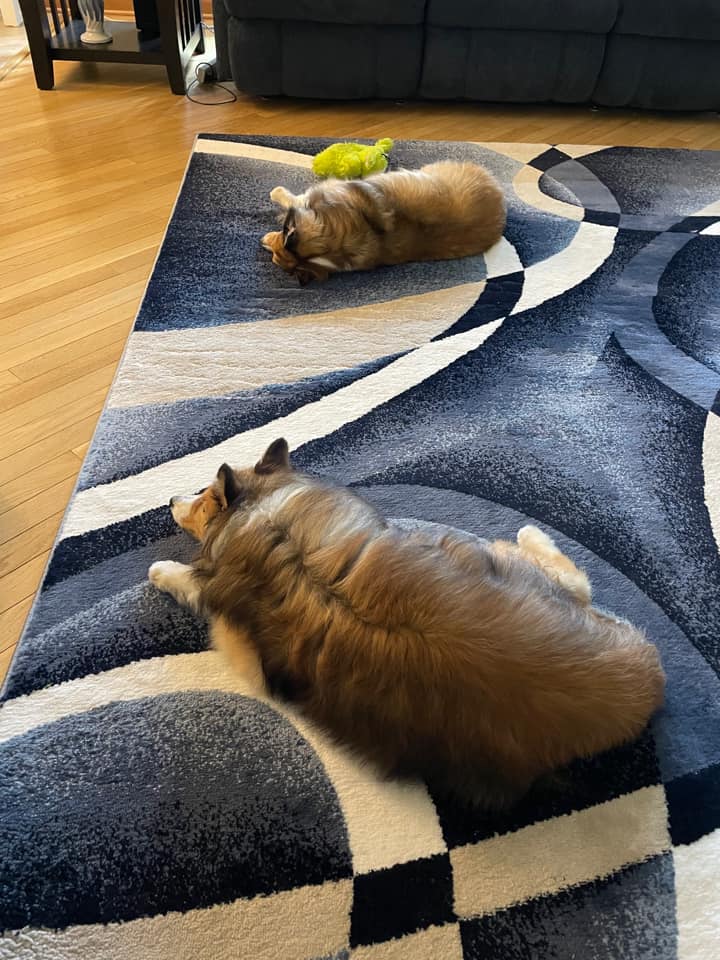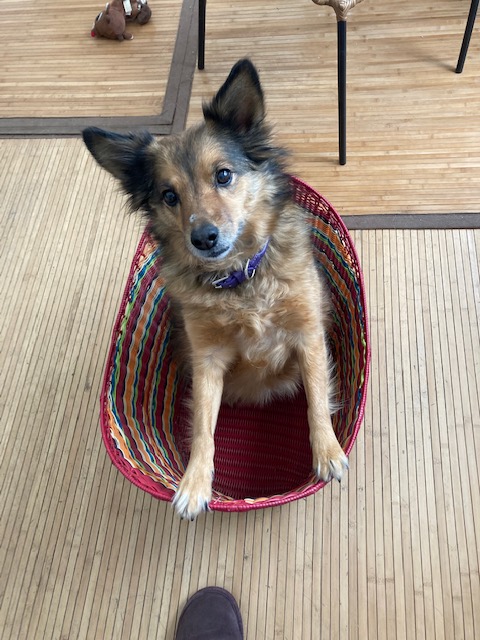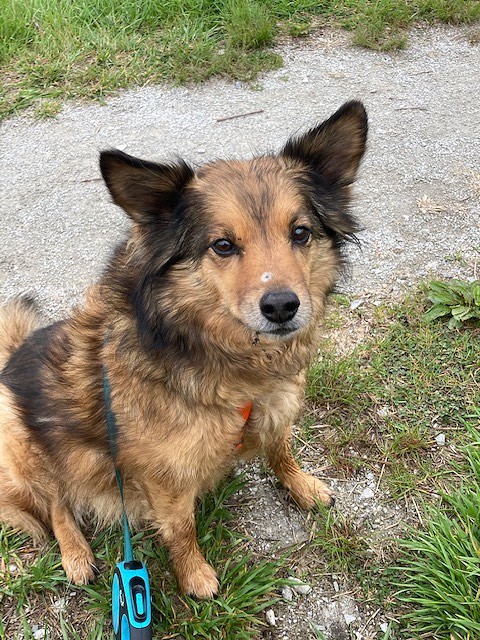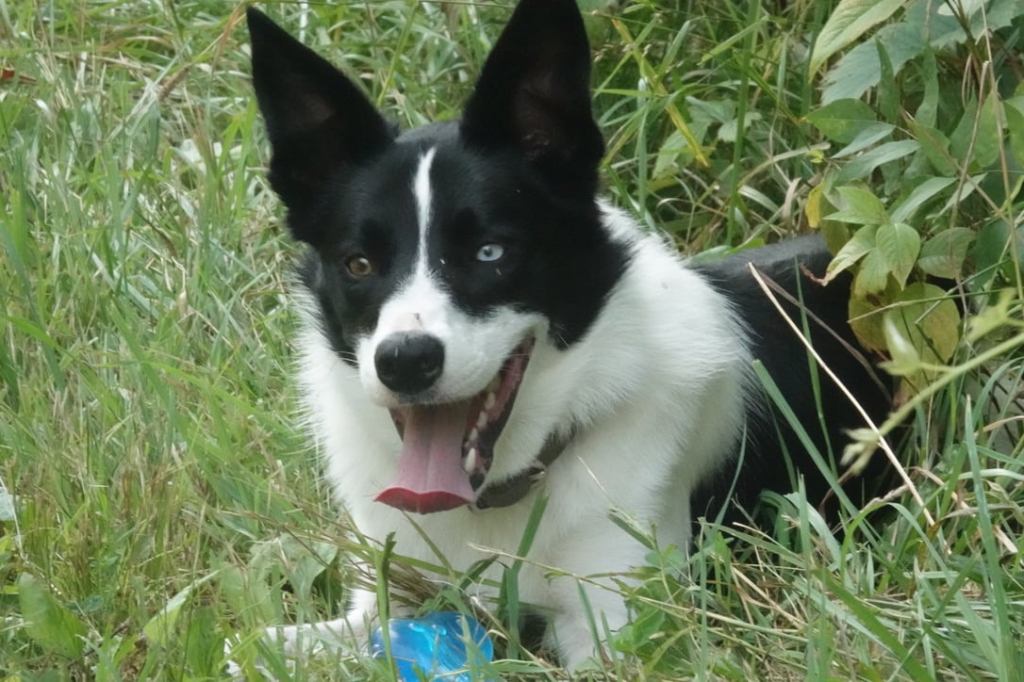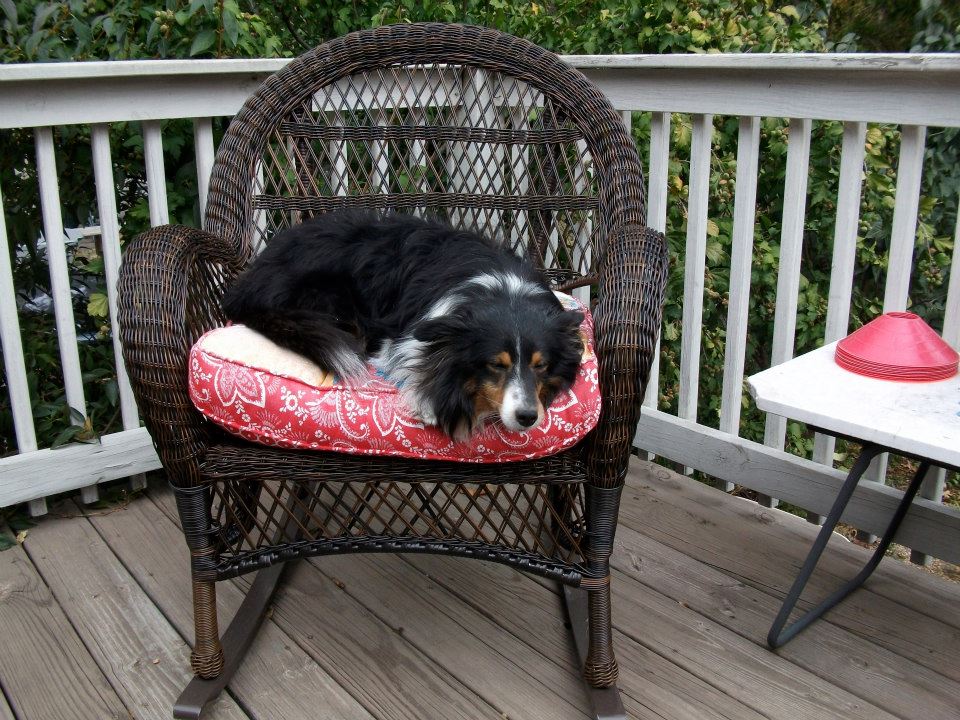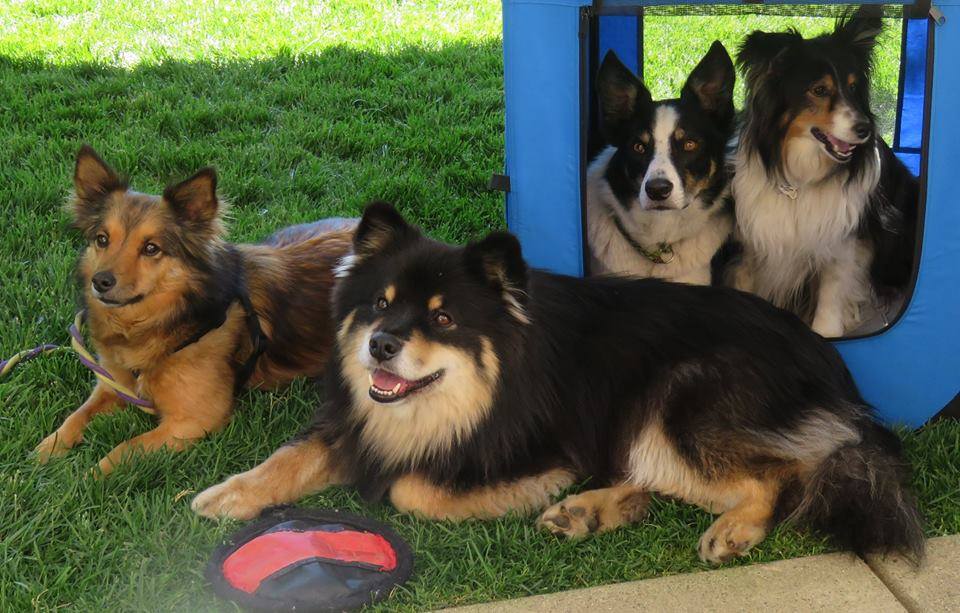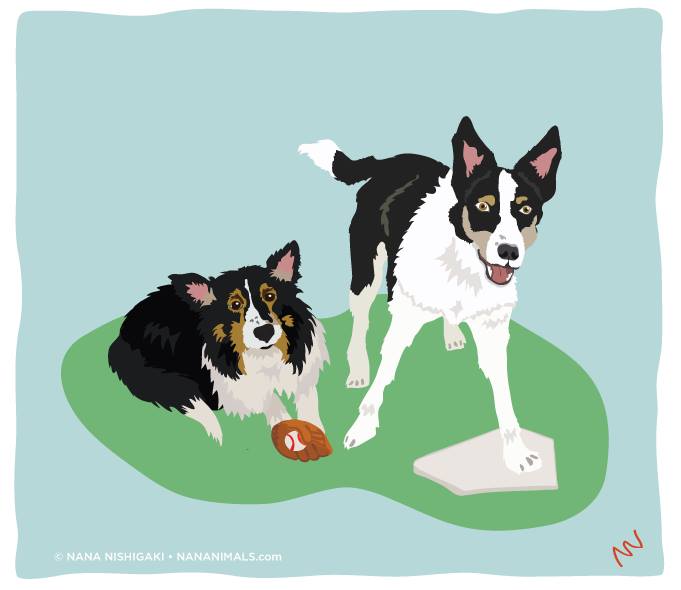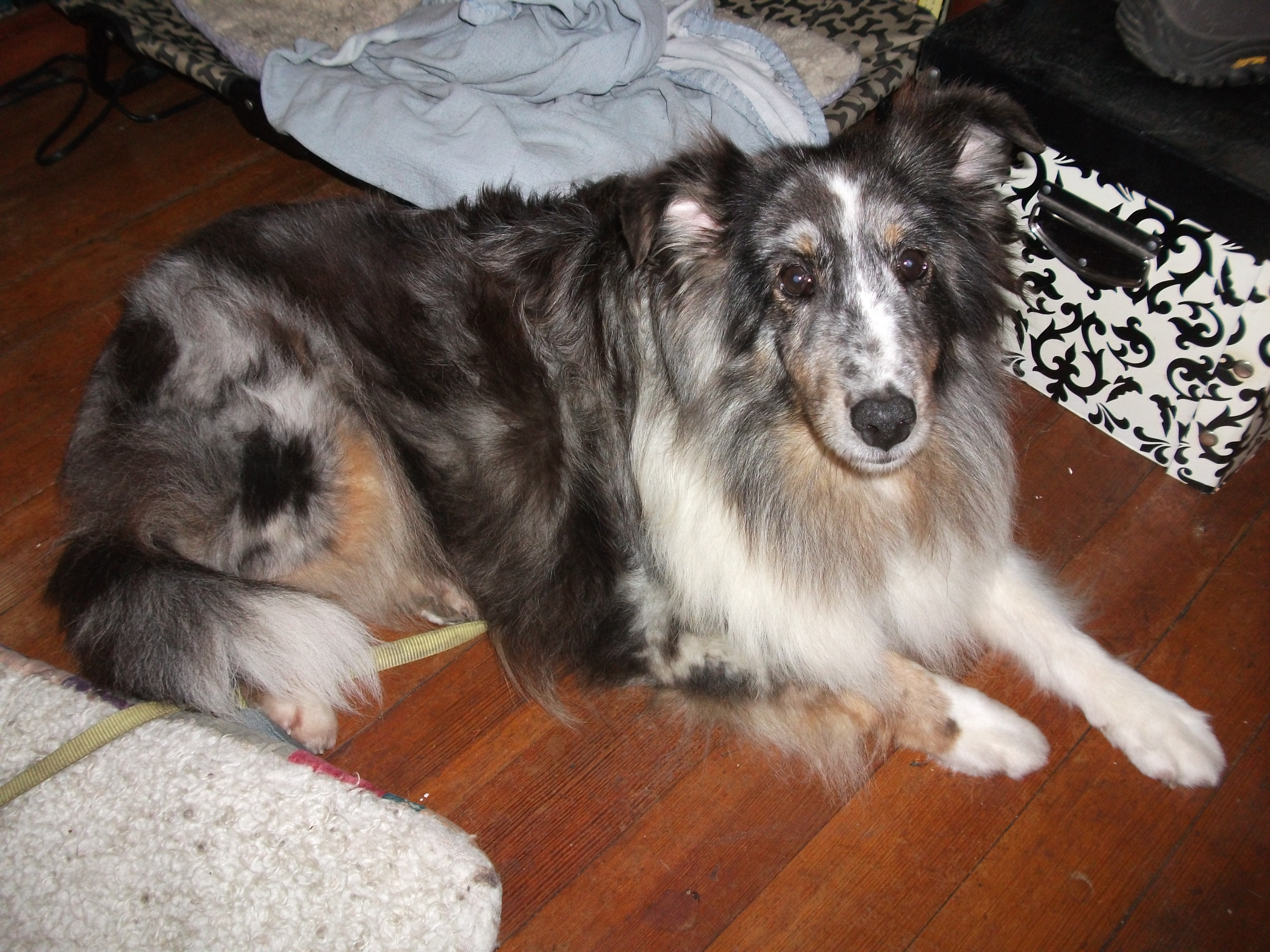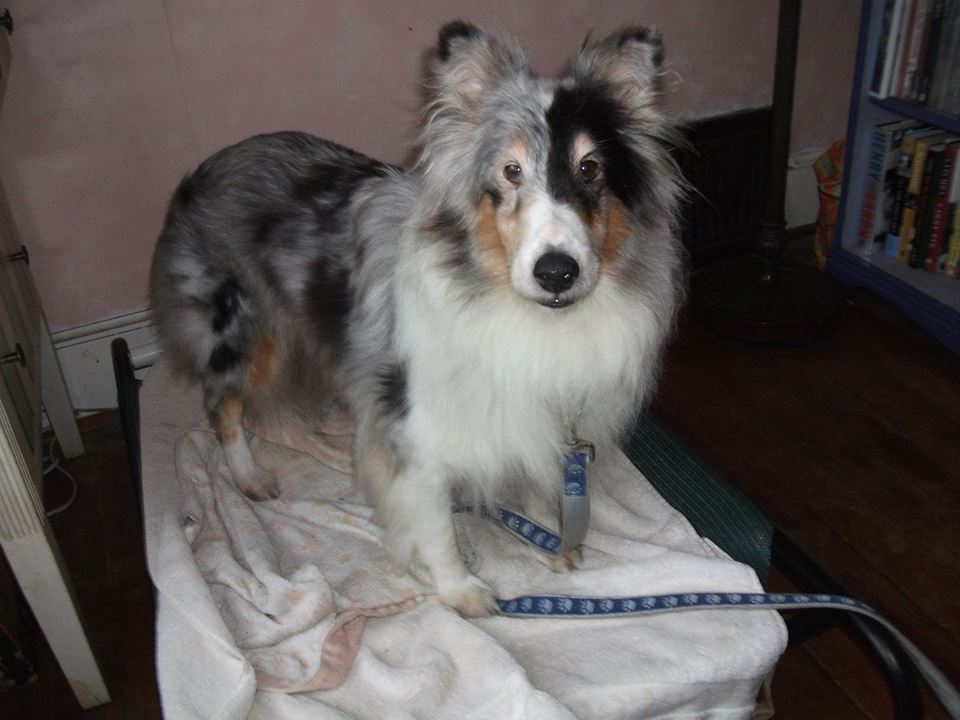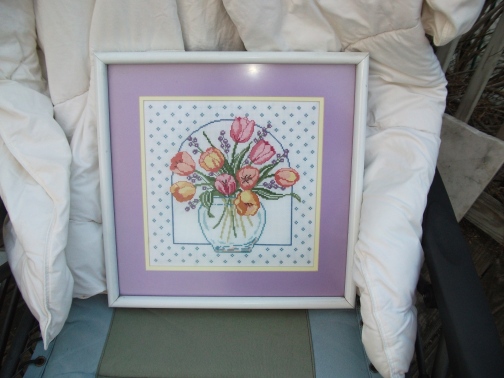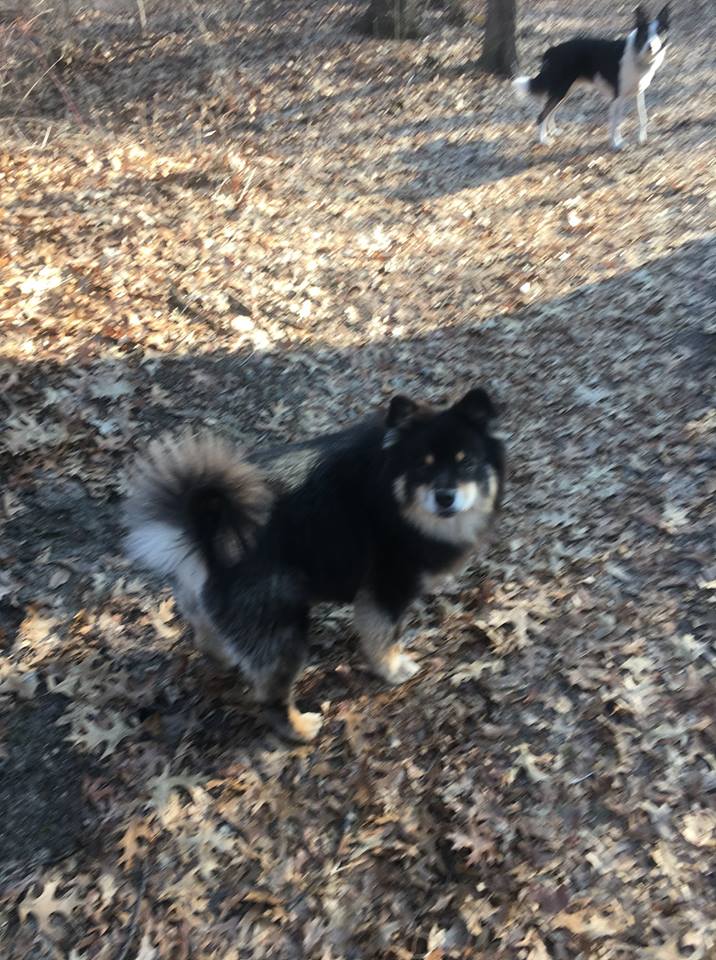I’ve been “in” dog sports for more than 30 years, about as long as I’ve owned dogs. I’ve always wanted my dogs to have things to do that will challenge them mentally and physically, and with my current crew, I do Nosework with my two Finnish Lapphunds; Tricks with my little brown “All American” dog; and Tricks and Agility with my young Border Collie.
Several years ago, when COVID shut down all our routines in dog sports and training, I stopped trialing my Lapphund Alex in Nosework. He’s got titles in a number of venues: AKC, UKC, CWAGS, and NACSW; but I just didn’t like the trial atmosphere and the way some of the trials were run. I made a token return to trialing this year by putting Alex and Siili both into a CWAGS trial, where they did well, but our weekly sniffing sessions are for enrichment only at this point, and we all enjoy them immensely and feel no need to ratchet anything up a notch there.
My senior retired Border Collie, Rowley, trialed in CPE agility for a few years, but when the only nearby venue that offered CPE trials at that time changed its location, we stopped that – and again, didn’t miss it. Rowley attended two agility classes per week until he had to retire from the sport a few years ago. Then I started Mylo, a sport-bred BC, in agility and never thought about trialing him, because I’d made the trial experience out in my mind to be a big hassle. When you get into your sixties, big hassles are way less inviting than they’ve ever been, let me tell you! But Mylo is a truly fine agility dog, and loves the sport a lot, so I decided I would put him into a few AKC trials, provided the trials were close to home and in facilities where he’d trained, so he would be familiar with them.

In February, we did three runs at a trial and the results were gratifying to us both: we got an NQ in the first run (Jumpers With Weaves), but a Q in each of the following two runs (Time To Beat, and Standard). It was a long day, with a lot of down/waiting time, and I figured I could tighten that up in future by entering only two runs that were close together in the judging schedule. I put in an entry for an April trial, with us in Novice Standard and Novice Jumpers With Weaves. That trial took place this weekend, and it will probably be the last trial I bother with, and I use that term with precision and intention.
The down and waiting time in any trial is an ordeal, for dogs and for handlers. There are a lot of ways that handlers cope with it. I’ve not found one that works for me. The dogs often wind up crated and with the crate covered and spend most of the day that way; that also doesn’t work for me. The Agility Gate app is a godsend, letting the entrants know how the running order is progressing. In theory, you could check in on the Gate and not show up at the trial venue until just before your first run – genius! But since this was Mylo’s second trial, we had to be there earlier than that, because he had to have his second measurement by the judge in order to determine his permanent jump height. We showed up in plenty of time for that, got it out of the way, and settled down to wait for the Novice Standard class. Mylo doesn’t mind being in crowds of people and dogs, and is not reactive in the slightest, but he and I are both easily bored and would rather be doing something else on a nice spring day, so we were glad when the Novice Standard course was built. Walk-throughs completed, we lined up when the 20” dogs were called. We started off very nicely indeed and were through almost half the course when the prolonged blast of a whistle penetrated my consciousness and brought me to a halt, with my dog on the down contact of the teeter. The judge was whistling me off the course in an NQ. Big clouds of question marks formed over my head – WTF? She indicated that the belt pack I was wearing was in violation of the AKC’s rule against bringing bait or bait bags into the ring. “But – it’s not a bait bag,” I explained, “it’s my phone and my keys!” The judge was sorry but a rule is a rule and I was in violation. Mylo and I departed the course, both of us confused and unhappy.
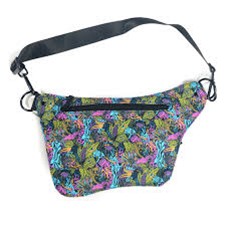
Here’s the thing: I was wearing a belt pack. I did have my keys and phone in it, since I did not want to leave them unattended on the sidelines when I was on the course. It wasn’t a bait bag, and I never kept treats in it, I used the pockets of my hoodie for that. And I didn’t have any treats or toys on me, because I know the rule against using those in the ring or bringing them into the ring. I should have thought of the belt pack, but I didn’t. And now I was rapped across the knuckles with a ruler and basically accused of cheating. Wow, did that light me up! I know it’s a rule, and I know that my belt pack could be considered a violation of that rule, but the more I thought about it, the less willing I was to see it the way the judge saw it. Consider these factors:
- The judge saw me wearing my belt pack well before I started the run with Mylo. She measured my dog, and I was wearing it. She conducted the briefing, and I was wearing it. She could have noted it then, and reminded me that it was going to get me an NQ. No, she didn’t have to do that; yes, I know she was just following the rules. But sometimes the alternative to ‘just following the rules’ is to act like a human being and treat another person like a person, not like a criminal.
- When I disputed the characterization of my belt pack as a bait bag, there was no appeal and no consideration given to the truth of my statement. The AKC says it’s a bait bag, so it is. And following that logic, the AKC says that I wore it into the ring so that I could give my dog an unfair advantage in some way, so I must be sanctioned for that. I’m a 68 year old woman who’s been doing dog agility longer than the AKC has, but they will tell me what I am wearing and why I am wearing it. Seriously?
- Given that I had committed an infraction of the rules, the judge could have let me finish my run with my dog, while signaling to the scorers that no points were to be given for it. The whistle blast and banishment from the course mid-run was just the judge being a jerk. Or, ‘following the rules’ if you will. Her choice. I can’t say I was surprised, since it’s always easier to be a rule-enforcing jerk than a sympathetic regulatory person. Twelve years in CME Market Regulation showed me that.
We stuck around for the other run, Novice JWW, and had a pretty nice run, but mentally I think I had already checked out of the whole notion of trialing. I find it stressful enough being in a trial atmosphere for hours at a time: I saw one woman whose reactive Border Collie was clearly struggling in that atmosphere and she was grabbing him by the head, trying to force him to look at her – I felt such sympathy for the dog I couldn’t stand it. I saw a guy giving his Aussie a serious talking to (yes, really!) and telling the dog how disappointed he, the owner, was in him and how the dog had let him down “out there” (on the course) – I wanted to smack the owner upside the head and give him a lecture about realistic expectations. I hate those glimpses into toxic dog-human relationships, and anyone who says those aren’t on display at a trial is blowing smoke. I know I cannot extrapolate entire relationships from vignettes like the two I mentioned, but I deeply dislike seeing dogs made to be or feel uncomfortable, or being the recipient of the off-loaded stress of their owners.
So I look at what’s on offer at a trial, and I think about how much I want these things:
- A chance to run my dog on some nice courses. I always love running my dog. But I can do that in lessons and in ring rentals. Not seeing that the trial courses are worth enough to me to compel me to pay the money and give the time. And honestly, the six weave poles in AKC novice is just stupid, and no matter how careful I am to put it in training, it throws my dog off every time and I am annoyed all over again.
- A chance to have my dog do well enough on those courses to get placements, qualifying scores, and titles. With ribbons! I gotta say, I have genuinely no interest in those things. I know how good my dog is. I’m the one who has put in the years of working with him to make him that good, to capitalize on his brains and natural ability! Is he ‘better’ than other dogs? Oh please – all my dogs are better than other dogs, in my eyes, because they’re my dogs! Is he objectively more accomplished than other dogs? Who cares?
Everyone’s got to do that calculus for him or herself. Some people do care more about those things than I do, and would even characterize them differently, or would list things that might not exist for me. That doesn’t make them right and me wrong; nor do my feelings make me right and them wrong. It’s more like: for whom are the trials run, and who derives enjoyment and rewards from them? (We know what the AKC derives, don’t get me started on that.) I am not a person for whom the trials are run. And at long last, after years of thinking that I should feel otherwise, I am happy to realize that there is no shame in that, and that if I object to being whacked over the knuckles with a ruler for a perceived infraction, I can opt out of that and find ways to enjoy my dogs that contain more humanity and don’t require me to tolerate people who are, as my fave author Jennifer Crusie so charmingly put it, winched to the eyebrows.

The deciding factor, for me, is the sad state of society today: that in general, since the Covid-caused lockdown, our interactions with other people have become less considerate and more abrupt, that there is an edge to encounters and situations today that is often mean and even downright nasty, that there are fewer filters keeping people from being openly antagonistic and aggressive to other people. I’m in full retreat from that, and while I hoped that dog sports would be one refuge from it, I’m not inclined to keep on thinking that with evidence to the contrary. So goodbye to dog sport trials, for what is likely the final time. Best wishes to all who participate, and congratulations to all who find more pleasant ways to enjoy time with their dogs.

